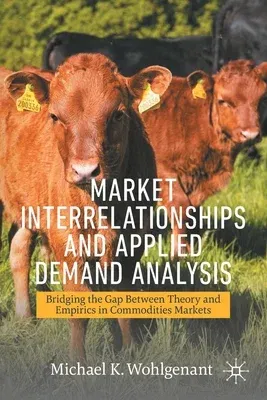Michael K Wohlgenant
(Author)Market Interrelationships and Applied Demand Analysis: Bridging the Gap Between Theory and Empirics in Commodities Markets (2021)Paperback - 2021, 29 June 2021

Qty
1
Turbo
Ships in 2 - 3 days
In Stock
Free Delivery
Cash on Delivery
15 Days
Free Returns
Secure Checkout
Part of Series
Palgrave Studies in Agricultural Economics and Food Policy
Part of Series
Palgrave Textbooks in Agricultural Economics and Food Policy
Print Length
230 pages
Language
English
Publisher
Palgrave MacMillan
Date Published
29 Jun 2021
ISBN-10
303073143X
ISBN-13
9783030731434
Description
Product Details
Author:
Book Edition:
2021
Book Format:
Paperback
Country of Origin:
NL
Date Published:
29 June 2021
Dimensions:
23.39 x
15.6 x
1.32 cm
ISBN-10:
303073143X
ISBN-13:
9783030731434
Language:
English
Location:
Cham
Pages:
230
Publisher:
Series:
Weight:
353.8 gm

